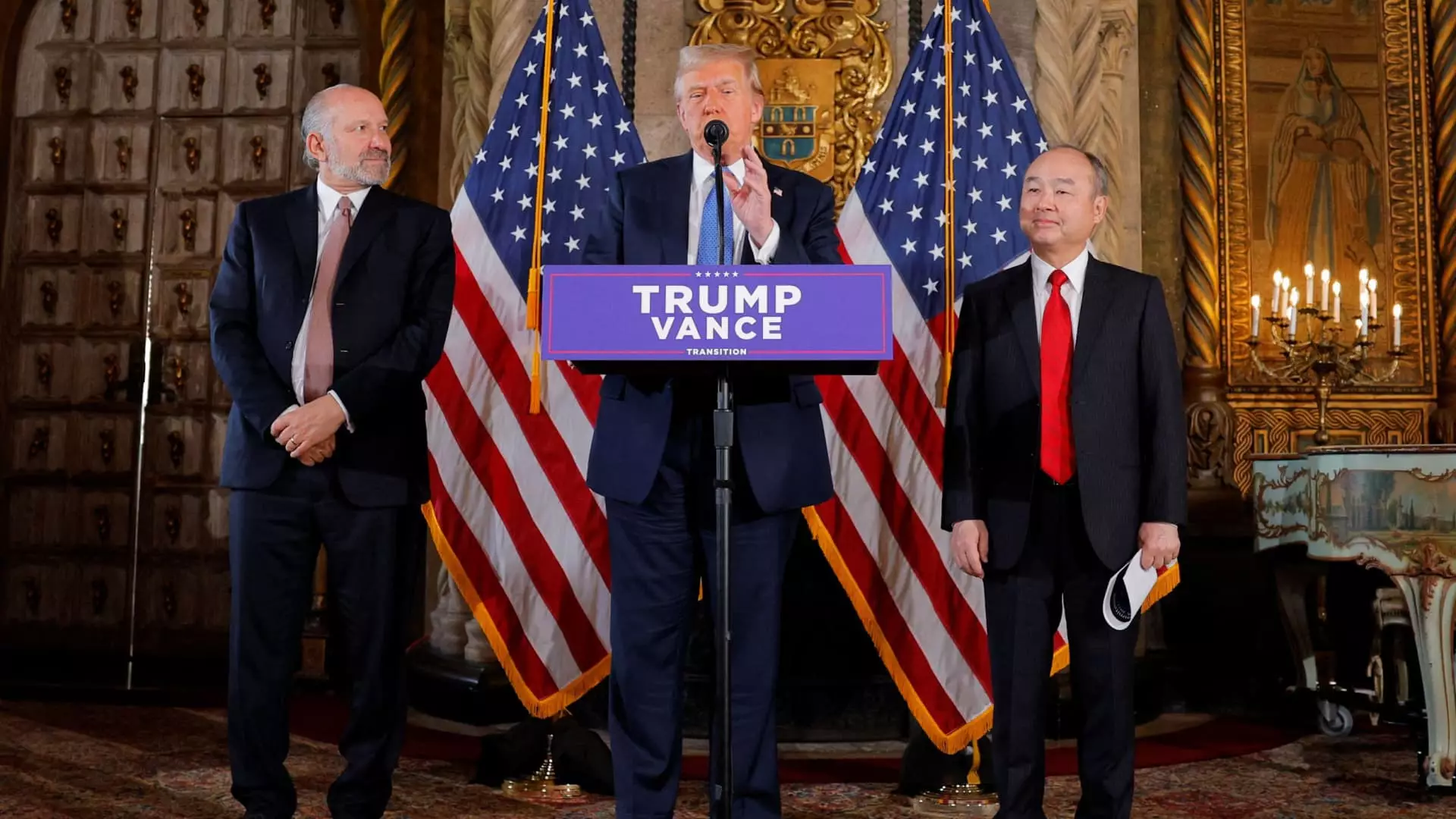In a significant declaration highlighting the interconnectedness of global economies, Masayoshi Son, the CEO of SoftBank, laid out an ambitious plan to invest $100 billion in the United States over the next four years during a recent meeting with President-elect Donald Trump. This announcement marks a pivotal moment in international business relations, especially following the two leaders’ previous collaboration in 2016, which resulted in a $50 billion investment aimed at creating 50,000 jobs.
Son’s optimistic assertion during his visit to Trump’s Mar-a-Lago resort reveals not only his trust in the American economy but also a broader strategy that intertwines technological advancement and employment opportunities. He articulated a vision focused on artificial intelligence and the infrastructure necessary to support such innovations—fields that promise to be at the forefront of the next technological revolution.
The renewed faith Son expressed in the U.S. economy can be interpreted as a direct challenge to skeptics of Trump’s economic policies. Not only did Son refer to Trump as a “double down president,” implying a strategy of increased investment despite potential risks, but he also framed this substantial financial input as an affirmation of the administration’s economic direction. This sentiment reflects a willingness to engage in high-risk ventures by investing in pioneering technologies that could reshape industries.
Trump further underscored the significance of this investment, framing it as a testament to the United States’ enduring appeal as a land of opportunity. He painted the influx of capital as a vital boost for the artificial intelligence sector and other emerging technologies, advocating for their growth and development on American soil, rather than abroad. Such sentiments signal a shift toward fostering domestic innovation in a time when competition is fierce globally.
SoftBank has a diverse portfolio, and the funding for this $100 billion initiative may come from various sources including its Vision Fund and existing projects like Arm Holdings, where SoftBank holds majority ownership. Furthermore, it’s pertinent to acknowledge that this capital may not consist solely of new funds; a substantial portion could derive from investments previously announced, such as the recent $1.5 billion infusion into OpenAI, the company responsible for developing groundbreaking AI technologies.
This multi-faceted funding strategy raises important questions about the sustainability of such investments and the impact that rapid capital influxes could have on the U.S. tech landscape. While job creation and economic revitalization are commendable goals, the real measure of success will hinge upon how effectively these investments translate into tangible growth and innovation within the tech sector.
SoftBank’s strategic mobilization of funds signals a proactive approach to tapping into the burgeoning AI market and aligning with future technological trends. However, as the investment landscape evolves, it will be crucial to observe how this commitment interacts with evolving political and economic climates. The undertaking underscores a significant investment strategy that, while ambitious, carries inherent risks in an unpredictable economic environment.
SoftBank’s commitment to invest in America is more than just a financial move; it represents a significant belief in the synergies of U.S.-Japan relations and reflects a long-term vision for the future of technology and employment in America. Whether this investment yields the intended results remains to be seen, but it undoubtedly highlights the relentless drive toward innovation in a rapidly changing world.

